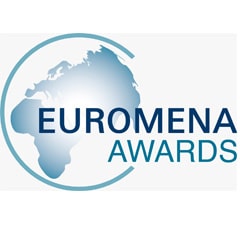Mercury is one of the few and rare elements that are abundant naturally in a liquid form. Mercury dissolves in oxidizing acids leading to the formation of either Hg2+ or Hg22+ according to the excess reagent. In addition, mercury element dissolves in aqua regia (a mixture of nitric and hydrochloric acids) forming HgCl42−.
Properties and Uses of Mercury: Mercury has a melting point of -38.87 °C and boiling point of 356.57 ° C. Its density is 13.546 g/cm3. It has two common oxidation states which are +1 and +2. Mercury is used in the manufacture of thermometers and scientific instruments. In addition, it is used as an electrical conductive element. Mercury vapor is used in streetlight signs and fluorescent signs. Mercuric chloride was used long ago by the Arab physicians as a wound disinfectant. However, this has been prohibited in modern medicine as it has been proven to be toxic to humans.
Mercury (II) Salts: Mercuric chloride formula (HgCl2) is one of the most commonly known mercuric containing salts. Mercuric chloride is also known as mercury (II) chloride and mercury dichloride. It has the molar mass of 271.496 gm/mol. It has been known as corrosive sublimate since it is sublimed then condensed in the form of rhombic crystals during its synthesis.
Preparation of Mercuric Chloride: Mercuric chloride can be prepared through the reaction of either chlorine with mercurous chloride or hot hydrochloric acid with mercury (I) containing compounds such as mercurous nitrate as shown in the following reactions:
Hg2Cl2 + 2 Cl2 → 2 HgCl2
Hg2(NO3)2 + 4 HCl → 2 HgCl2 + 2 H2O + 2 NO2
Furthermore, mercuric chloride can be prepared commercially on a large scale through heating a mixture of solid mercuric sulfate and sodium chloride leading to the formation of volatile mercuric chloride that could be separated by sublimation then condensed.
Properties and Uses of Mercuric Chloride:
- Mercuric chloride is a white rhombic crystalline salt whose chemical formula is HgCl2.
- Mercuric chloride has been proven to be toxic to human beings.
- Mercuric chloride is sparingly soluble in cold water, while soluble in hot water and other organic solvents such as methanol, ethanol, acetone, ethyl acetate, etc.
- Mercuric chloride is used in organic synthesis procedures especially as a catalyst to convert acetylene into vinyl chloride as shown below: C2H2 + HCl → CH2=CHCl
- Mercuric chloride is used as a depolarizer in the manufacture of batteries.
- Mercuric chloride is used as a chemical reagent in analytical chemistry as well as stabilizing agents for some chemicals.


















